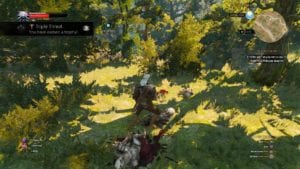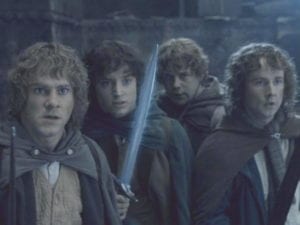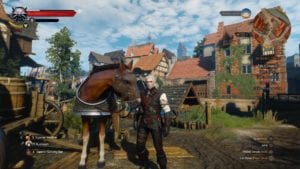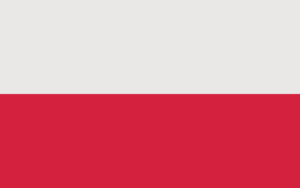Witcher on Netflix: What We Expect
Disclaimer: hyperlinked text includes Wikia articles and YouTube videos that may contain spoilers for The Witcher video games
Readers who checked out my first piece on role-playing may recall I referred to the Witcher series as the greatest thing to come out of Poland since Lech Walesa. For those of you who aren’t link-clickers, Lech Walesa was a Polish labor leader who won the Nobel Peace Prize in 1983 and helped create the world state that ended the Soviet Union. Cool dude. Anyways, the original Witcher novels by Andjrez Sapkowski have become international hits, and the games by CD Projekt Red have been universally applauded. The most recent entry to the franchise, Witcher 3: Wild Hunt, has sold over 25 million copies and received over 160 Game of the Year awards. Isn’t that nice?
CD Projekt Red announced that Wild Hunt and it’s expansions, Hearts of Stone and Blood and Wine, will be the last gamers might hear of Geralt of Rivia…in a game. That’s right; turns out this white-haired monster slayer will be pirouetting to your favorite device as a brand new Netflix series. Cue the trumpets and confetti. To commemorate the announcement, let’s look at what we want from a Witcher series to make it a success with gamers and non-gamers alike.
- Monsters
Geralt of Rivia is a monster slayer. If such a thing existed, Geralt would have a doctorate in monster slaying. A witcher begins their training at a young age. When the time comes they are subjected to the Trial of Grasses, a painful procedure that causes beneficial mutations, and some not so beneficial. Geralt and his colleagues are left with strange, cat-like eyes and become sterile, all to make them the perfect monster hunters.

So it’d be kind of ridiculous to not have monsters in the show, right? The fanged and feathered creatures of Geralt’s world are an important part of bringing Sapkowski’s work to any medium, but the series also focuses a lot on politics, intrigue, and societal themes of discrimination and even religion. It would be easy for werewolves and ghouls to get side stepped in favor of a political plot.
The games have brought to life dozens of visually distinct and near-iconic creatures. The hulking fiend is a mash up of bestial imagery. The leshen, a personal favorite, is a nightmarish tree person surrounded by a cabal of forest creatures, like Wes Craven presents Groot. I could spend hours listing every monster in the Witcher series and why’d it’d be great on screen, but I’ll settle with only one more. We need trolls, man. Watch this clip on YouTube. I would watch a twelve hour season of these dudes.
- Complex Narratives and Intrigue
The world the of Witcher takes place in an entirely fictional universe that draws parallels with the High or Late Middle Ages in Europe. To the south is Nilfgaard, a nation fueled by imperialist dreams, clad in black with a yellow sun, and led by “The White Flame who Dances on the Graves of his Enemies.” It’s pretty unique as far as names go. In Wild Hunt he’s played by everyone’s favorite sinister senior: Charles Dance, Tywin Lannister from Game of Thrones.

The Northern Realms are made up of small kingdoms, other nations dot the landscape such as the wine loving region of Toussaint or the Viking-like isle of Skellige. The interplay between these kingdoms and their rulers is key to driving the plot in the Witcher games, and the era Geralt lives in is defined by Nilfgaard’s wars of expansion and hostile pogroms against elves, dwarves, sorceresses, and sometimes witchers as well.
What Netflix has a chance to do here is really create their own version of Game of Thrones, which sounds like a terribly dangerous idea. The line franchises have to toe when they stand in the shadow of other successful franchises balances between cheap imitation or worthy successor. Andrzej Sapkowski’s originality and strong world crafting combined with the world building by CD Projekt Red only sets up Netflix for success, as long as they bring strong writers and strong production design to the table. Political intrigue and bloodthirsty arch-griffins – it’s a solid premise.
- A Cast of Misfits
We learned in Harry Potter, Star Wars, Guardians of the Galaxy, Goonies, and so many more places that we’re nothing without our friends. Geralt is surrounded by supporting characters that add new dimensions and emotion to his stories, especially necessary considering that another side effect of witcher mutations is the loss of strong emotions. Some of his buddies are other witchers, some are sorceresses, and some are shape shifting halflings.

Dandelion is a Casanova character with a penchant for poems and getting into trouble. Yennefer of Vengerberg is Geralt’s once and always love, but their relationship is more complex and lacks the traditional romance we’ve grown accustomed to onscreen. Ciri, Geralt’s adopted daughter, provides a way for Geralt to express feelings that other characters don’t have the ability to. We don’t know right now exactly when the Netlfix series takes place in Geralt’s timeline, so we don’t know how many of his friends he’ll have met yet, but there’s one companion he cannot do without.
- Roach
Roach is quite possibly the best equine companion in the history of gaming. Even the bugs that sometimes cause him to appear on rooftops or to rocket down the side of mountains only serve to make Roach more endearing. As Geralt’s horse, he provides sometimes the only companionship on the witcher’s long and lonely journey.

A side quest in Witcher 3 involves Geralt leading a goat back to its owner by way of jingling a small bell or jedi mind-tricking it with a witcher form of magic known as signs. In a touching moment, Geralt says the goat would make a good Roach, the name he always gives to his horses, because Roaches are dependable and don’t talk much. There are a lot of Geralt’s companions that I could forgive not being present in an adaptation, but if Roach isn’t in the show, I will RIOT.
- Poland
Last, but certainly not least, is the inclusion of Geralt’s mother land. Give me a moment to get my soapbox.
The world is a big place, and it can be very easy to forget how big it is. But not only how big it is, how many people there are in it. Not only how many people are in it, but how different they all are. And readers, that’s a very good thing. This is an opportunity for Netflix to partner up with Polish companies and talent to create something that can be owned and appreciated by distinct cultures.
And guess what? They’re totally doing that. Polish director Tomas Baginski will be directing at least one episode per season, and Poland’s Platige Image is co-producing the show. I love the smell of international productions in the morning. Smells like victory.

Hardcore fans of the series will be pleased to note that the Netflix production will be an adaptation of Sapkowski’s novels, not the games of CD Projekt Red, whose narratives take place after the Witcher novels’ conclusion. While Sapkowski has a habit of undermining the success and importance of the Witcher games, it would be unwise for Netflix and Platige to dismiss contributuions CD Projekt Red has made to adapting the series both with strong visuals and top-shelf writing.
But we want to know what you think! What is an aspect of the games or novels that you need to see in Netflix’s Witcher? How much faith do you have in the production? Are you Team Triss or Team Yen and- damn it Roach get off of that barn! Let Handsome Phantom know your thoughts and you could get a shout out on Adventure Mode!

